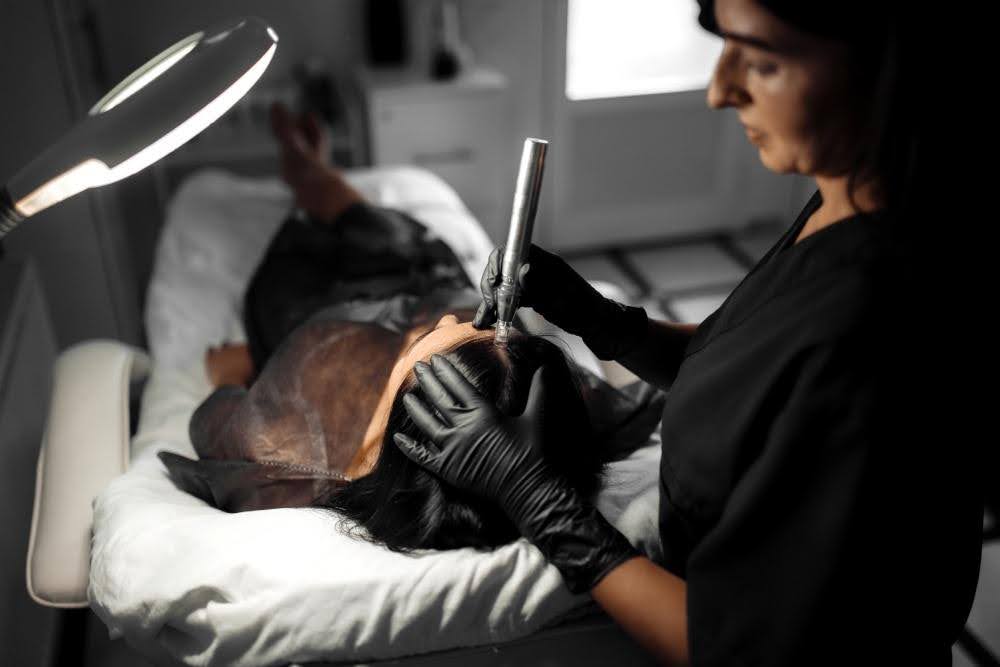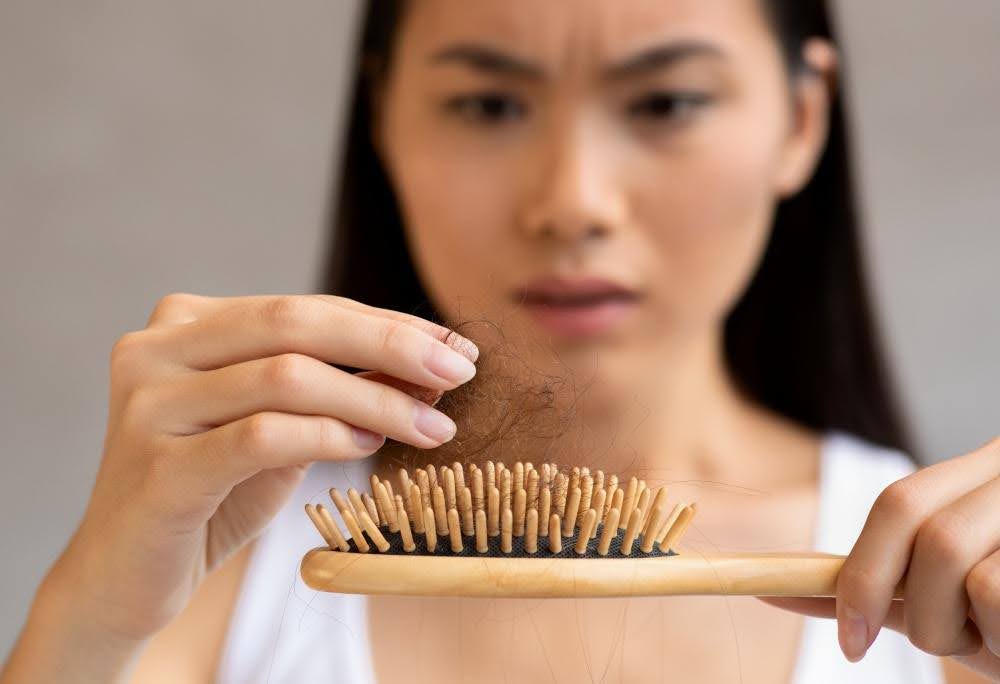The search for effective hair loss solutions often leads individuals to explore non-surgical cosmetic options. Among these, scalp micropigmentation (SMP) and microblading have both gained considerable attention.
While both procedures involve cosmetic tattooing, they are not interchangeable. Scalp micropigmentation (SMP) is a method exclusively developed for the scalp to mimic hair follicles. Microblading, on the other hand, employs a handheld blade to mimic hair strokes, and while often associated with eyebrows, is sometimes considered for enhancing existing hair density. The fundamental differences between both these options also extend to the tools, pigments, and application techniques used for each, making them distinct from one another.
Unveiling the Core Discrepancies Between SMP and Microblading
Given that both procedures are forms of cosmetic tattooing, a key question remains: Is SMP the same as microblading?
Microblading is a semi-permanent makeup technique primarily used for eyebrow enhancement, creating a defined and shaped look by mimicking natural hair strokes. This technique typically lasts 1 to 2 years. In contrast, SMP is a non-surgical procedure developed specifically for the scalp to camouflage hair loss. It uses specialised pigments and equipment to create a long-term solution that replicates the shadow of hair follicles, creating a denser visual effect.
The Three Major Differentiators: Scalp Micropigmentation vs. Microblading
Even though SMP and microblading can achieve similar-looking results on the surface, the procedures behind them are fundamentally different. The three major differentiators that set them apart include:
1. Distinct Tools and Their Application: Lines Versus Dots
Microblading is a manual process, performed with a handheld microblade tool that is used to create fine, hair-like strokes. This manual approach gives the artist a unique level of control over each individual line. In stark contrast, SMP is done with a precision-engineered digital rotary tool. This machine, calibrated for the delicate skin of the scalp, is designed to make thousands of tiny, circular pigment impressions.
Crucial distinction: Microblading creates lines while SMP makes dots, which is a foundational difference that directly impacts the final appearance.
2. Pigment Composition and Fading Characteristics
SMP typically uses pigments that have been specifically formulated to remain a true-to-colour shade as they slowly lighten and fade naturally over time on the scalp. This ensures the pigment ages well and blends seamlessly with your hair as it changes. In stark contrast, microblading pigments often have a different composition, which is designed for the fine skin of the eyebrows. These pigments tend to fade much faster, lasting only one to three years.
Crucial distinction: While both are intended to fade gracefully, the pigment formulation for SMP is tailored for a longer lifespan on the unique skin of the scalp.
3. Underlying Technique and Artistic Goals
The techniques and artistic goals of these two procedures are fundamentally different as well. As mentioned, microblading involves creating fine, hair-like lines to add density and shape to an eyebrow. Conversely, SMP focuses on depositing thousands of tiny, circular impressions across the scalp to give the appearance of a closely cropped haircut or a thicker look.
When it comes to artistic goals, SMP is primarily restorative, aiming to replace the appearance of a hairline or density where hair once was. The goal is to return the scalp to a previous, fuller look. Microblading, however, is often seen as a form of creative expression for the artist and individual, designing brows that may be an artistic interpretation rather than a strict restoration of the original.
Crucial distinction: SMP’s purpose is to be restorative, while microblading is often more about creative expression.
A Direct Comparison: Scalp Microblading Versus Scalp Micropigmentation
Beyond the tools and artistic goals, the practical aspects of scalp microblading and scalp micropigmentation also differ significantly.
- Longevity: Scalp microblading is a semi-permanent solution, with results lasting around 12 months. In contrast, SMP, while also considered a semi-permanent option, delivers results that can hold for many years before a touch-up is necessary.
- Cost: The upfront cost for scalp microblading is typically more affordable than SMP. However, when you factor in the frequent touch-ups required for microblading due to its shorter lifespan, SMP can prove more cost-effective over time.
- Expertise/History: SMP has a well-established history and a specialised training pathway tailored for the scalp. Scalp microblading, as a procedure for the scalp, is a relatively new application, meaning there is less historical data, and technician expertise may still be evolving.
- Customisation: SMP is highly customisable, making it suitable for all ages and skin types. The procedure can be customised to your specific needs, creating a final result that looks natural and fits your aesthetic goals.
Choosing Your Path: Deciding Between Scalp Microblading and SMP

So, which is better, microblading or micropigmentation? The decision is a personal one that requires careful consideration of several factors. When weighing your options, you should evaluate:
- Your age, current life stage, and long-term goals for the procedure.
- The specific symptoms and extent of your hair loss.
- The underlying cause of your hair loss.
Whether you are experiencing early signs of a receding hairline or are in the more advanced stages of pattern baldness, you will likely find that scalp micropigmentation can provide the results you are looking for. Unlike microblading, which can produce a less consistent outcome on the scalp, SMP is a non-surgical option for addressing scalp hair thinning or loss.
Crucial Warning: Why Microblading is Not for Your Scalp
We must also issue a strong caution against allowing anyone to microblade your scalp. The fundamental issue lies in the skin’s nature; the scalp, rich in natural oils (sebum), heals differently from the skin of the eyebrows, making line-work highly problematic. And when lines are inserted too deeply on the scalp, a phenomenon known as a “blow-out” can occur. This is when the pigment becomes fuzzy, bleeds together, and leads to uncontrolled colour changes that are very difficult to correct.
It is thus critical to understand that a technician’s expertise in a procedure like eyebrow microblading, lip blush, or other cosmetic tattoos does not automatically qualify them to perform scalp micropigmentation, as these are entirely different procedures requiring specialised training and an understanding of the scalp’s unique anatomy. Therefore, any form of microblading on the head should be avoided.
Given these risks, choosing the right professional for your scalp is paramount. If you are considering a hairline restoration tattoo in Singapore, you need an expert who understands the scalp’s unique needs. For a professional scalp microdotting service, seeking guidance from a reputable studio is essential. Monostudio is a trusted beauty skin studio near Boat Quay, offering consultations to help you choose the right path for your hair goals.
